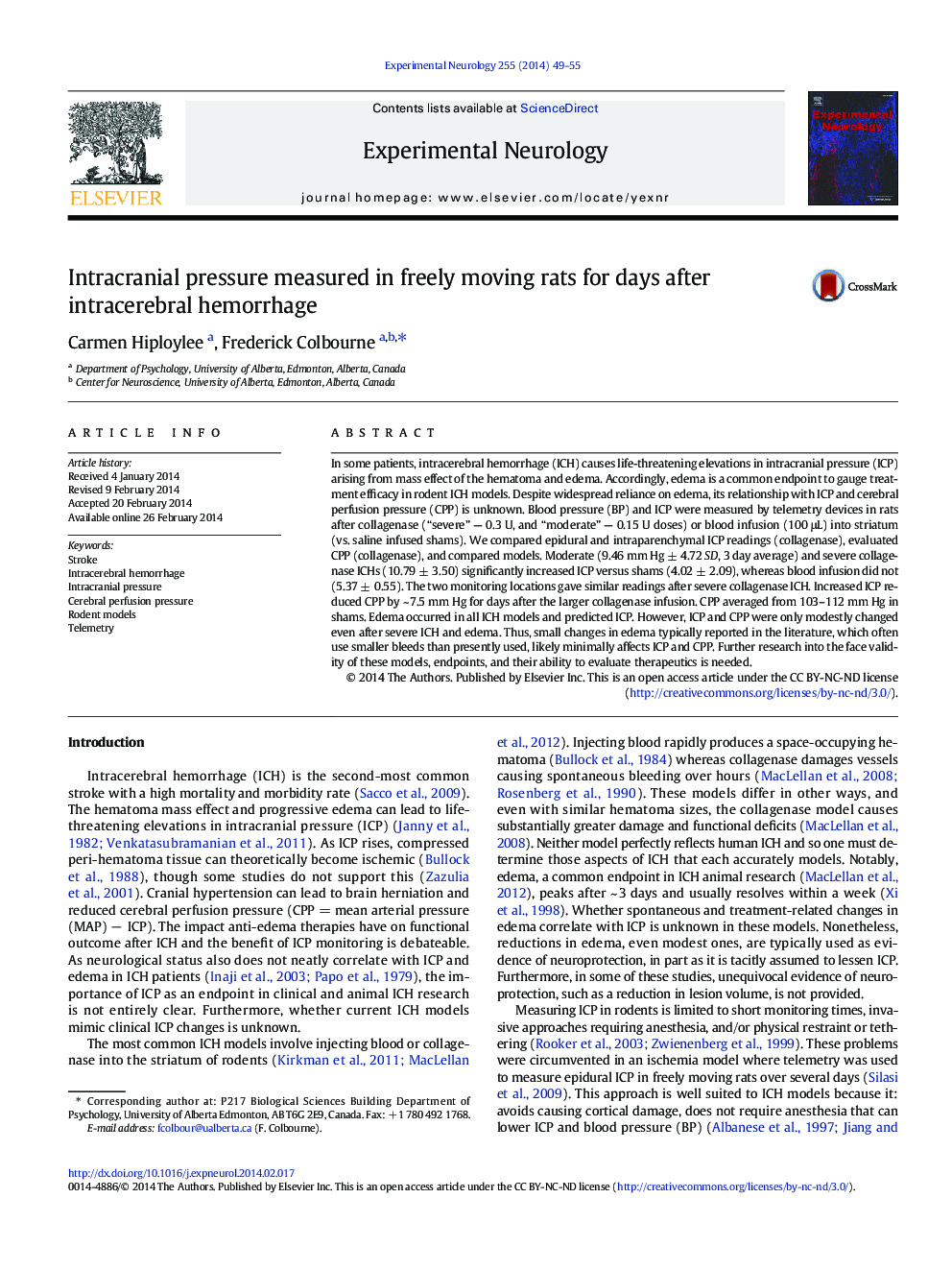| Article ID | Journal | Published Year | Pages | File Type |
|---|---|---|---|---|
| 6017820 | Experimental Neurology | 2014 | 7 Pages |
Abstract
In some patients, intracerebral hemorrhage (ICH) causes life-threatening elevations in intracranial pressure (ICP) arising from mass effect of the hematoma and edema. Accordingly, edema is a common endpoint to gauge treatment efficacy in rodent ICH models. Despite widespread reliance on edema, its relationship with ICP and cerebral perfusion pressure (CPP) is unknown. Blood pressure (BP) and ICP were measured by telemetry devices in rats after collagenase (“severe” - 0.3 U, and “moderate” - 0.15 U doses) or blood infusion (100 μL) into striatum (vs. saline infused shams). We compared epidural and intraparenchymal ICP readings (collagenase), evaluated CPP (collagenase), and compared models. Moderate (9.46 mm Hg ± 4.72 SD, 3 day average) and severe collagenase ICHs (10.79 ± 3.50) significantly increased ICP versus shams (4.02 ± 2.09), whereas blood infusion did not (5.37 ± 0.55). The two monitoring locations gave similar readings after severe collagenase ICH. Increased ICP reduced CPP by ~ 7.5 mm Hg for days after the larger collagenase infusion. CPP averaged from 103-112 mm Hg in shams. Edema occurred in all ICH models and predicted ICP. However, ICP and CPP were only modestly changed even after severe ICH and edema. Thus, small changes in edema typically reported in the literature, which often use smaller bleeds than presently used, likely minimally affects ICP and CPP. Further research into the face validity of these models, endpoints, and their ability to evaluate therapeutics is needed.
Keywords
Related Topics
Life Sciences
Neuroscience
Neurology
Authors
Carmen Hiploylee, Frederick Colbourne,
